Another component tester - MG328 - Test / Review / Opinion
Today I am going to present to you a Chinese component tester received, from Gulson, for testing and reviewing, with the symbol MG328 Not to be confused with the previously presented GM328 .
The main advantage of this tester is that it can work with a Lithium Ion battery and can be charged from USB. Unfortunately this is also its disadvantage, as the battery is not included. From the pictures, it is not clear what size of cell is used there and you might think that it is the well-known and well-loved 18650 cell. This is unfortunately not the case. The tester is powered by a 14500 cell, which is a Li-Ion in the size of an AA battery. Their prices are relatively high, and the cells themselves, unlike the aforementioned 18650s, do not languish uselessly in a drawer.... Well I just happened to have a few, but I doubt if any of you have them.
Time to add some colour to the article... So you have a screenshot of the auction .
.
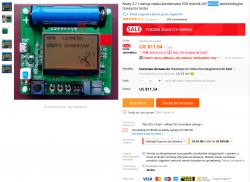 .
.
As you can see, for eleven and a half dollars, which as of today translates into approximately 43 Polish zlotys, we can purchase the tester in question for ourselves from our Asian friends.
The contents of the package consist of the assembled tester (without the casing, which can be purchased separately) and three test leads, which are terminated on one side with two-millimetre bananas, and on the other side with medium-quality crocodiles.
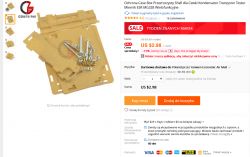 .
.
At a price close to three dollars, which gives us slightly more than eleven zlotys, we can purchase an acrylic case. If we already have another tester in one, or an oscilloscope, we will have a nice addition to the whole. From the photo, it appears that this time, unlike the GM328, the case protects the display.

 .
.
The cables appear to be quite sturdy, and the crocodile teeth surprisingly fit together without any problems.
From the auction description (in "chinglish") it appears that it is possible to calibrate the unit, unfortunately I don't know how to do this. The standard shorting of all inputs triggers the self-test. And this is where you can see that calibration would be useful.
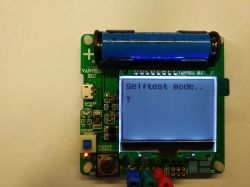
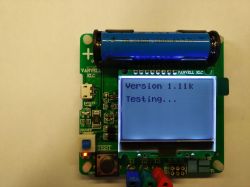
Below you can see the results of several attempts. I did not change anything or even touch anything. I only clicked the button that starts the test.
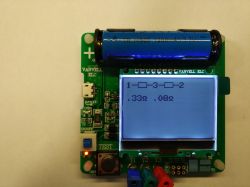
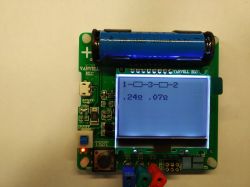 .
.
I am concerned about the differences in results. They are seemingly small, but they are there nonetheless. Although, looking on the other hand, for the money, the results are still very accurate. They are, after all, fractions of an ohm.
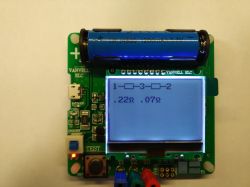
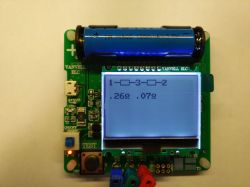 .
.
Let's see, then, how the measurements of the various components present themselves.

 .
.
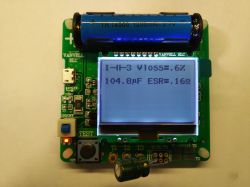 .
.
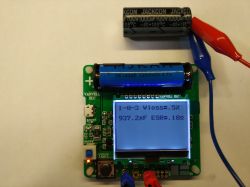
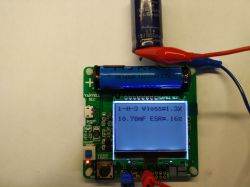 .
.
As you can see, the tester is accurate, and in addition measures ESR.
So let's see if it measures resistance just as well.
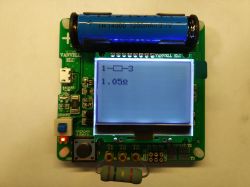
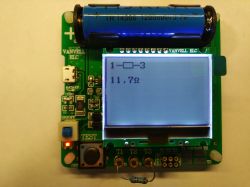 .
.
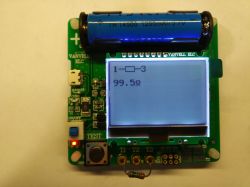
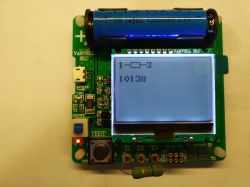 .
.
In the pictures, 1Ω, 12Ω, 100Ω, 1kΩ in turn.
In the following photos you can see a test of several types of transistors:
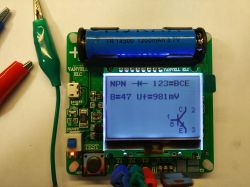
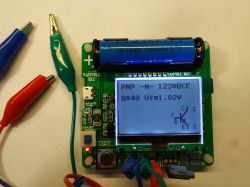 .
.
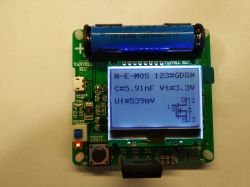 .
.
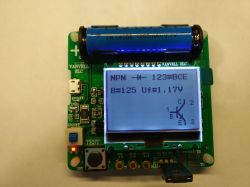
 .
.
As can be seen, in this area, the tester is no different from any other with a graphic display.
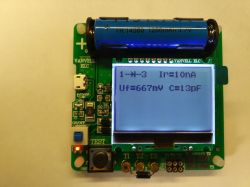 .
.
1N4007 diode.
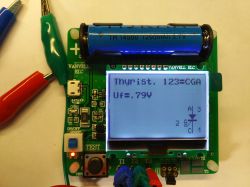 .
.
Thyristor 0.8A 600V, I can't remember the symbol.
Now let's move on to more interesting cases....
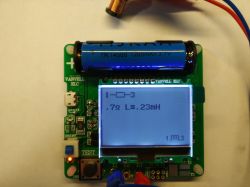
As you can see, there is no problem with the inductance measurement either.
Out of curiosity, I connected a 2.7V Zener diode to the diagnostic socket. I obtained the following result:
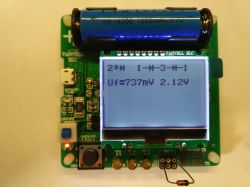 .
.
This made me curious and I decided to check up to what voltage, Zener, the tester would recognise the diode as a "zener" and when it would stop. I should add that the previously presented testers (without modifications) did not support the Zener diode test at all .
 .
.
2V7 diode
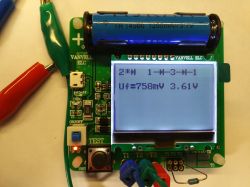
3V9 diode
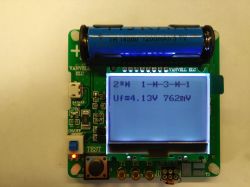
4V2 diode
As you can see, the measurement is not very precise, or the diodes have a macabre tolerance. I will investigate this tomorrow, using a workshop power supply.
Zener diodes at higher voltages are recognised as ordinary diodes.
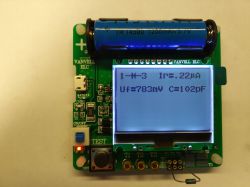
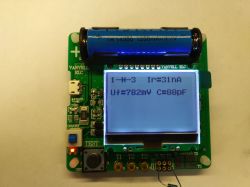
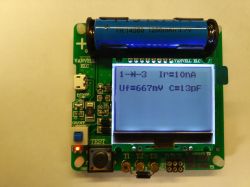 .
.
In the images above we have the 6V8; 7V5 and 12V Zener diodes in sequence.
After reading the Chinese-Polish description of the auction, you can find out that actually, the tester supports Zener diodes up to 4V5
In the case of Triacs, on the other hand, the tester gets lost in the same way as presented early on. With small triacs, there is a chance that it will show the correct measurement. I usually I use a BTA16 and in their case the measurement result looks like this:
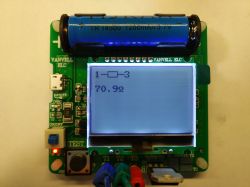 .
.
There is, however, a reasonable explanation for this phenomenon. Here I quote majfriend again:
That is, it appears that the tester may simply "not have the power to make such a triac work".
Time for a few words of summary.
As far as my eye can see, this is something between the GM328 described by me earlier in the year and the M328 described by TechEkspert earlier. Nevertheless, I consider the tester to be worthwhile in this price class.
Regards.
CMS
The main advantage of this tester is that it can work with a Lithium Ion battery and can be charged from USB. Unfortunately this is also its disadvantage, as the battery is not included. From the pictures, it is not clear what size of cell is used there and you might think that it is the well-known and well-loved 18650 cell. This is unfortunately not the case. The tester is powered by a 14500 cell, which is a Li-Ion in the size of an AA battery. Their prices are relatively high, and the cells themselves, unlike the aforementioned 18650s, do not languish uselessly in a drawer.... Well I just happened to have a few, but I doubt if any of you have them.
Time to add some colour to the article... So you have a screenshot of the auction
 .
.
As you can see, for eleven and a half dollars, which as of today translates into approximately 43 Polish zlotys, we can purchase the tester in question for ourselves from our Asian friends.
The contents of the package consist of the assembled tester (without the casing, which can be purchased separately) and three test leads, which are terminated on one side with two-millimetre bananas, and on the other side with medium-quality crocodiles.
 .
.
At a price close to three dollars, which gives us slightly more than eleven zlotys, we can purchase an acrylic case. If we already have another tester in one, or an oscilloscope, we will have a nice addition to the whole. From the photo, it appears that this time, unlike the GM328, the case protects the display.

 .
.
The cables appear to be quite sturdy, and the crocodile teeth surprisingly fit together without any problems.
From the auction description (in "chinglish") it appears that it is possible to calibrate the unit, unfortunately I don't know how to do this. The standard shorting of all inputs triggers the self-test. And this is where you can see that calibration would be useful.


Below you can see the results of several attempts. I did not change anything or even touch anything. I only clicked the button that starts the test.

 .
.
I am concerned about the differences in results. They are seemingly small, but they are there nonetheless. Although, looking on the other hand, for the money, the results are still very accurate. They are, after all, fractions of an ohm.

 .
.
Let's see, then, how the measurements of the various components present themselves.

 .
.
 .
.

 .
.
As you can see, the tester is accurate, and in addition measures ESR.
So let's see if it measures resistance just as well.

 .
.

 .
.
In the pictures, 1Ω, 12Ω, 100Ω, 1kΩ in turn.
In the following photos you can see a test of several types of transistors:

 .
.
 .
.

 .
.
As can be seen, in this area, the tester is no different from any other with a graphic display.
 .
.
1N4007 diode.
 .
.
Thyristor 0.8A 600V, I can't remember the symbol.
Now let's move on to more interesting cases....

As you can see, there is no problem with the inductance measurement either.
Out of curiosity, I connected a 2.7V Zener diode to the diagnostic socket. I obtained the following result:
 .
.
This made me curious and I decided to check up to what voltage, Zener, the tester would recognise the diode as a "zener" and when it would stop. I should add that the previously presented testers (without modifications) did not support the Zener diode test at all .
 .
.
2V7 diode

3V9 diode

4V2 diode
As you can see, the measurement is not very precise, or the diodes have a macabre tolerance. I will investigate this tomorrow, using a workshop power supply.
Zener diodes at higher voltages are recognised as ordinary diodes.


 .
.
In the images above we have the 6V8; 7V5 and 12V Zener diodes in sequence.
After reading the Chinese-Polish description of the auction, you can find out that actually, the tester supports Zener diodes up to 4V5
Quote:.Zenera diode 18 can be detected if the reverse breakdown voltage is less than 4.5 v. This will appear as two diodes, can only be determined by the voltages. The probe around the diode symbol is the same, in this case, you can 700mV voltage threshold close to the true recognition of the diode anode!
In the case of Triacs, on the other hand, the tester gets lost in the same way as presented early on. With small triacs, there is a chance that it will show the correct measurement. I usually I use a BTA16 and in their case the measurement result looks like this:
 .
.
There is, however, a reasonable explanation for this phenomenon. Here I quote majfriend again:
Quote:.If the current test exceeds the current holding, thyristors and triac can be detected. But some current higher than the semiconductor SCR and triac tester can provide current triggering. Available current test is only about 6mA
That is, it appears that the tester may simply "not have the power to make such a triac work".
Time for a few words of summary.
As far as my eye can see, this is something between the GM328 described by me earlier in the year and the M328 described by TechEkspert earlier. Nevertheless, I consider the tester to be worthwhile in this price class.
Regards.
CMS



Comments
And will it measure the inductance of 10-100uH chokes or show them as resistors? [Read more]
This is what the description of "majfrjenda" says, unfortunately I do not have a drawer with coils with known parameters to compare. [Read more]
Hello, it would be appropriate to test whether the meter measures inductance. As many of us somehow deal with the measurement of C / ESR, my intuition tells me that a group of colleagues struggle with... [Read more]
Sorry, my oversight. I was sure I included a picture of the coil measurement. I added in the first post. [Read more]
There has been this device for some time and I am very happy with it. I desoldered the socket for the 14500 battery and soldered the 18650 cell directly to the board. The length fits perfectly. It does... [Read more]
Does the device work properly while charging? Does this have any effect on the results? [Read more]
The tester works from a converter which increases the voltage to 5V from the battery. Whatever it is, so charging that increases the voltage on the cell does nothing wrong. [Read more]
I am curious what is this inverter (what circuit)? Is there a schematic of this version of the tester somewhere? [Read more]